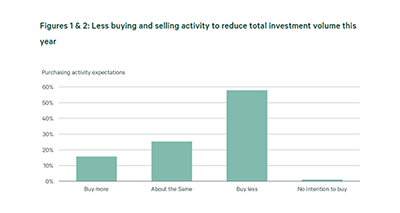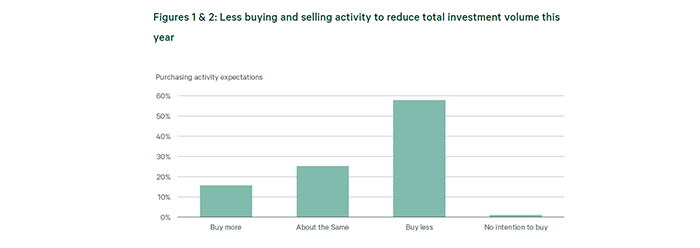
CBRE: Real Estate Investors Targeting Secondary Markets, Opportunistic Strategies

U.S. commercial real estate investors favor opportunistic strategies and show a preference for secondary markets amid concerns about higher interest rates and tighter financial market conditions, reported CBRE, Dallas.
The CBRE U.S. Investor Intentions Survey said economic uncertainty is weighing on investment sentiment in 2023, with more than half of investors expecting to decrease purchasing activity compared with last year. Nearly a third (29%) of investors said they will target opportunistic and distressed assets in 2023 to take advantage of market conditions compared with 19% in 2022.

“While weakening macroeconomic conditions and rising interest rates will weigh on commercial real estate investment volumes in 2023, the amount of capital targeting the sector remains abundant,” said Chris Ludeman, Global President of Capital Markets for CBRE. “Investors are willing to accept more risk to achieve higher returns and other metrics such as lower leverage, increased debt service coverage ratio and once again a focus on acquiring assets at a discount to replacement cost have all been pushed to the forefront.”
Ludeman said he expects investment activity will pick up in the second half of the year as market conditions stabilize.
CBRE noted most investors expect price discounts across sectors, with shopping malls and value-add office assets expected to offer the greatest discounts. Despite changes in strategy and pricing, almost 70% of investors expect no change in fund allocations to real estate from last year.
Investors continue to prefer high-performing secondary markets, with Sun Belt cities the most appealing. Dallas is the top target market, followed by Austin, Miami, Los Angeles and Nashville.
Multifamily remains the most sought-after sector (38%), followed by industrial (28%), especially modern logistics facilities in major markets, CBRE reported. Grocery-anchored centers are the most popular subsector for retail investors, while office investors largely prefer Class A assets in prime locations.
In the current high interest environment, real estate debt is considered the most attractive alternative investment, followed by build-to-rent, life sciences, self-storage, affordable housing, data centers and student housing, the report said.
“Despite continued conservative underwriting, most lenders are currently quoting and winning new business, even though they expect new originations to decline 10% versus the prior year,” said Rachel Vinson, President of Debt & Structured Finance in the U.S. for CBRE. “Concerns around maturity risk and more conservative underwriting criteria from traditional lending sources–focused on wider going-in and exit cap rates and higher debt yields–will contribute to the further rise of opportunistic investors. While uncertainty continues, the need for capital, whether for tenant build outs, basic improvement or ESG upgrades, is certain. The question remains how long can both lenders and borrowers wait.”
